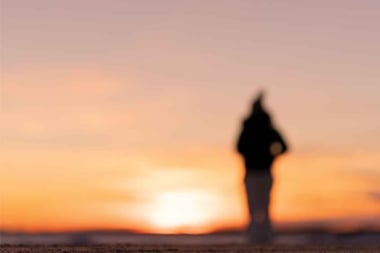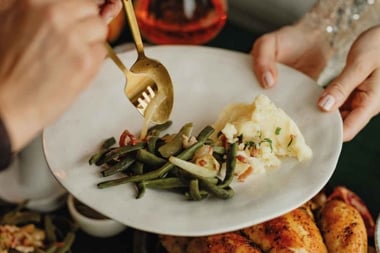
Cancer survivors who take part in a charity fundraising challenge, such as a cancer ride, test their physical and mental resources - and regain control of their lives.
From spring to fall, calendars are filled with bike rides, walks, and runs dedicated to raising funds for various cancer charities. For many participants, these events are more than just fun and physically challenging—they’re also opportunities to fight back against a disease that has hit close to home.
Achieving personal milestones post-cancer
When then 28-year-old Jason Hammerschmidt was diagnosed with acute lymphoblastic leukemia, doctors gave him a 50/50 chance of recovery. A coin flip for his life, he thought. After two years of treatment, including a hip replacement, Hammerschmidt felt there was a piece of his recovery that was still missing.
“The doctors and nurses at the Princess Margaret Hospital took care of the cancer itself, but there’s so much more that comes with a cancer diagnosis: the emotional, the spiritual, and the psychological effects. [The hospitals] really didn’t have outlets to take care of that,” says Hammerschmidt.
He found relief in Wellspring—a cancer support centre that offers specially designed support programs such as yoga, back-to-work advice, and stress management to help patients cope with the emotional side effects of cancer. Hammerschmidt credits these programs with helping him navigate his new emotional space and getting his post-cancer life back on track.
Still, the years of treatment and decreased hip mobility left him with little confidence in his body. When a friend convinced him to sign up for a running class, he never imagined only 10 weeks later, he’d be running a 5 km race. “That gave me the idea that maybe I’m capable of doing everything that I used to do if not even more,” he says.
Hammerschmidt set his sights on loftier goals, and in 2012 participated in Wellspring’s Peloton Challenge—cycling from Toronto to Austin, Texas. “I thought to myself, I can’t bike to Austin, Texas, that’s crazy,” but running the 5 km had shown him he could do anything he put his mind to, so he accepted the challenge and raised $10,850 for Wellspring.
Riding in a 24-hour relay style, in six-hour turns for seven straight days, Hammerschmidt was once again nervous about his body’s ability to perform. “I was concerned that maybe my hip wouldn’t be able to take that,” he says.
Having only cycled recreationally as a child, he didn’t even own a bike when he registered for the event. Arriving in Austin, Texas, on October 20 was a milestone in Hammerschmidt’s life. “I’m pretty amazed that I did it. It’s the toughest thing I’ve ever done before cancer treatment, and I would never have imagined [being] post-cancer treatment,” he says.
Crossing the finish line was not Hammerschmidt’s only cause for celebration. “I celebrated my five-year anniversary of no treatment during the ride,” he says. The event cemented the realization that he had been given a second chance and that he could accomplish anything he put his mind to.
Overcoming uncertainty
Linda Carlson, PhD, professor of psychology in the Department of Oncology at the University of Calgary and clinical psychologist at the Tom Baker Cancer Centre, says participating in physical charity challenges can help survivors, such as Hammerschmidt, regain a sense of control that was lost in their cancer diagnosis.
“You have your life planned out and you think things are going to go a certain way and then [the] happens and it completely throws everything to the wayside,” says Carlson. Handing over one’s future to the medical system creates a sense of insecurity that’s often difficult to overcome, even after treatment is complete.
“A lot of therapeutic approaches are about patient autonomy, getting back some sense of control over elements of your life,” says Carlson. Charity challenge events provide survivors with an opportunity to regain some physical empowerment that was lost during the treatment stage.
Giving back
After months or years of treatment, patients can often feel as though they have become a burden to their family, friends, and even the health professionals attending them. “It’s very frustrating for many people to be in that helpless position, and they often feel a debt of gratitude [to],” says Carlson. Charity events offer an opportunity to pay it forward and to recognize all those who helped them along the road to recovery.
Physical—and psychological—therapy
Challenge events encourage physical activity, which has numerous psychological and physical benefits. “From a psychological perspective, exercise improves mood and fatigue. It’s one of the best interventions for treating cancer-related fatigue, which is very common in cancer patients,” says Carlson.
In addition, research from the University of Alberta, conducted by Dr. Kerry Courneya, is showing that physical activity positively affects survivorship and is a factor in preventing the recurrence of cancer.
Sharing a cancer connection
Charity challenge events provide another component that is essential to cancer survivors’ mental health. “People often feel a sense of isolation: the idea that nobody gets what I’m going through. My friends and family, as much as they want to be supportive, can’t really get it unless they’ve been through it,” says Carlson. Cycling, running, or walking alongside other survivors provides camaraderie and support among individuals who share the same history.
Janina Oliveira was diagnosed with breast cancer in 2000 and has been participating in the Weekend to End Women’s Cancers—a two-day, 60 km walk—since the event’s inception in 2002.
“I was the very first volunteer,” boasts Oliveira. Although her body is in remission, Oliveira still feels her emotional journey with cancer had not yet finished. “Just because our treatments are finished, doesn’t mean it’s over. Other people who aren’t diagnosed [with] can’t relate to that. It’s that chatter in the back of the brain that only anyone who’s been through [cancer] can hear,” says Oliveira.
Participating in the walk has helped Oliveira overcome feelings of isolation. Although her friends and family have always been supportive through her diagnosis, treatments, and beyond, she says there are certain emotions that can only be shared with a fellow survivor.
“Unless you’re actually touched by it, I think you can only imagine how you would feel,” she says. Walking alongside other survivors provides an opportunity for camaraderie that is often lacking in everyday life. “You’re sharing your story with someone else who has gone through the same thing. Right away you can relate to each other,” she says.
The Weekend to End Women’s Cancers concludes with a closing ceremony in which walkers fill the centre of the arena, surrounded by the cheers of their supporters. Dressed in pink T-shirts, survivors are the first to enter. Often, they fill nearly half the arena.
“It’s great to know there are so many survivors, but it’s also heart-wrenching to consider how many people are actually diagnosed with [cancer],” says Oliveira. The closing ceremony opens a well of emotions for her and fellow survivors. “Twelve years later, it still brings tears,” she says.
Dealing with loss
While charity challenge events help survivors overcome feelings of isolation through the camaraderie shared among other survivors, they can also help those who have lost loved ones to the disease. The events provide an opportunity to be embraced with the support of the community and honour lives lost to cancer.
In 2011 Ulana Kopystansky cycled across the country with the Sears National Kids Cancer Ride—riding 7,000 km in 17 days from White Rock, BC, to Halifax—in memory of her daughter Taissa, who passed away at the age of 13 of non-Hodgkin’s lymphoma.
“I didn’t even own a suitable bike, and I’d never cycled any great distance before,” says Kopystansky. The fact that 100 percent of donated dollars went toward kids’ cancer programs supported by the Coast to Coast Against Cancer Foundation made the ride appealing as a way to commemorate her daughter’s life.
“My first training session was at 5 am on the morning of Taissa’s anniversary, March 29, 2010,” she says. Riding long distances gave her time to clear her head and remember her daughter. “There was always a lot to think about, especially when I was cycling approximately 180 km per day for 17 days straight across Canada,” says Kopystansky, who tied a royal blue ribbon (Taissa’s favourite colour) to her handlebars.
While the ride was physically gruelling, seeing the ribbon gave her the strength to ride on. She gave each of her team members a swatch of blue ribbon as well. “I asked them to look at the ribbon during those difficult times when the hills seemed too tough, when the body said ‘no more,’ or when the physical pains of cycling took over, and remember that it was our choice to be there at that time. The kids we were cycling for were never given the choice,” she says.
“The memory of how Taissa fought her fight with such grace, strength, perseverance, and courage provided the visual for me to continue cycling during those times,” says Kopystansky, whose bike still has that blue ribbon tied to its frame. Finishing the ride in Halifax, surrounded by the deep blue water and her teammates wearing their blue ribbons on bikes, helmets, or forearms was the tribute Kopystansky was seeking for her daughter.
While she says there is no greater pain than that of losing a child, Kopystansky says the ride helped ensure her daughter’s life was remembered and valued.
“Many people are at a loss for what to say to a parent who has lost a child, and unfortunately there is nothing that can ease the pain,” says Kopystansky. “All I can do is ensure that Taissa’s memory burns bright. I believe this is the thread that starts the healing process—the assurance and knowledge that she will always be remembered.”
Cancer charity backlash
We probably all know someone who has either participated in or donated to a charity challenge event. Their wonderfully cathartic and uplifting benefits are often the primary reason for people’s involvement. And for this reason alone, they are valuable efforts.
But there is also a rising backlash against what some see as profiteering cancer fundraising promotions. They see some fundraising efforts in support of one cancer or another as just another cash grab by large corporations, which benefit by sponsorship of particular events and campaigns.
When you look closely at some of these events run across the country in the name of cancer prevention, support, and research, you find some interesting corporate names.
- Ride to Conquer Cancer, a two-day, 200 km bicycle ride operated in Alberta, BC, and Quebec, lists Enbridge as its major sponsor.
- Sears National Kids Cancer Ride is a 7,000 km cross-country journey from Vancouver to Halifax that raises money for the Coast to Coast Against Cancer Foundation (CCACF). The sponsor is, of course, Sears, though CCACF also lists other corporate sponsors such as New York Fries.
- CIBC’s Run for the Cure operates in 59 locations across Canada and involves a 5 km or 1 km walk or run in support of the Canadian Breast Cancer Foundation (CBCF). One of Canada’s five major banks, CIBC may not need the money, but it certainly benefits by the prestige and PR kudos of sponsorship. The CBCF itself lists some interesting sponsors, given its vision of “creating a future without breast cancer”: East Side Mario’s, Purina Cat Chow, Revlon, and Duron Plastics.
Pink products for everyone—and everything!
When it comes to cancer fundraising, the list of pink products sold in the name of breast cancer awareness and support are seemingly endless. But who do the proceeds really support?
- clothing, lingerie, and footwear
- pink jewellery and watches
- pink toothbrushes, hairbrushes, and manicure sets
- pink iPod speakers and iPhone cases
- pink tennis rackets and balls, pink golf carts, and pink soccer balls
- pink tools (hammers, screwdrivers, measuring tapes)
- pink snow brush and ice scrapers
- pink Tic Tacs
- even pink salads!




